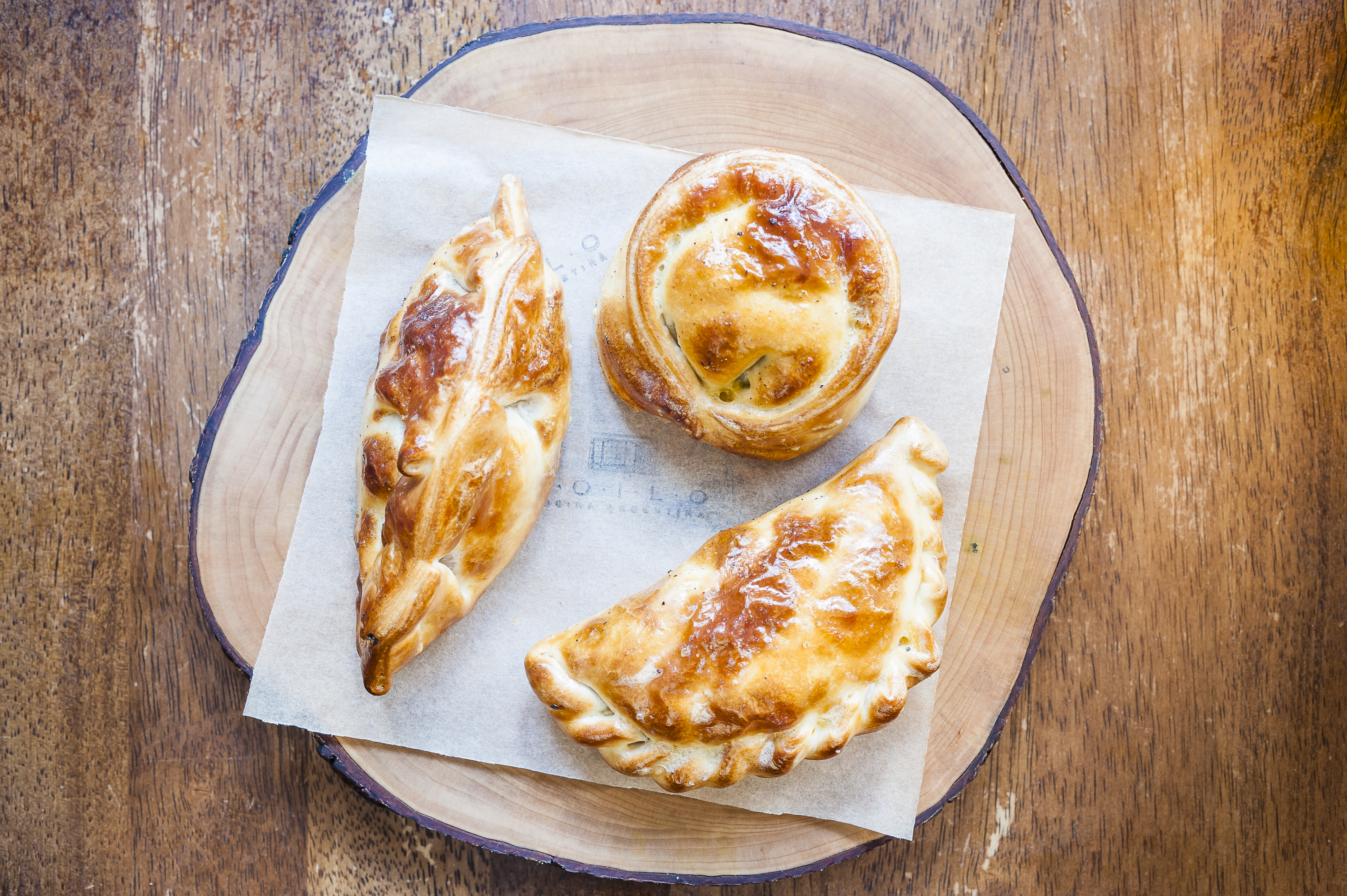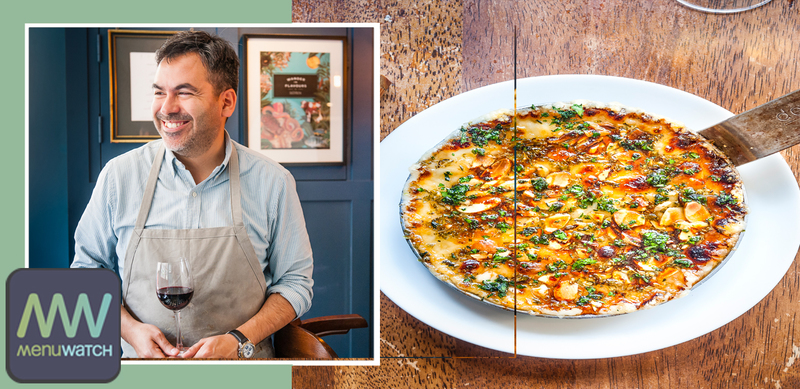Diego Jacquet, Chef Patron, ZOILO
Diego Jacquet is chef patron of London-based ZOILO and boCHINche and The Butchers Wife in Singapore.
- Which restaurants have a Michelin star?
- Read other Menuwatch features here
- Try out some of Diego Jacquet's recipes here
Diego is the chef patron of Argentinian restaurant ZOILO in London and boCHINche and The Butchers Wife in Singapore.
The Staff Canteen caught up with Diego to find out more about his menu style, the incredible produce from Argentina and how he wants to highlight how there is more to Argentinan food than just steak and Malbec.

Can you talk me through your process of menu and dish creation?
It’s strictly seasonal, we try to show as many of the different products away from beef as possible -obviously beef is a very symbolic Argentine product, so there needs to be some presence in terms of a beef offering though, but there is so much more to Argentine cuisine.
We work very closely with our suppliers, especially for fruit and vegetable. We have a supplier in Cornwall for fish. He calls us when the boat has landed and tells us ‘We have this, we have that’ – we talk very closely every week.
I sit down with my head chef and sous chef and we ask ourselves ‘How would we like to get the best out of that product?’
How often do you change your menus?
I would say the big changes happen monthly, but every week we tweak a couple of dishes. We are driven by seasonality and the weather – we need to be ready! I think the key element to the menu is to be ready and to act fast. So, for example, we have some asparagus – what do we do with it?
I also read a lot, eat out a lot and talk with friends for ideas – it’s an ongoing thing process.
You go home to Argentina as often as possible - how important is it to go back there to pick up new ideas?
When I went recently, the berry season was finishing and it was very interesting to see all the different berries – blackberries, strawberries and elderberries.
There were various people producing saffron there. I also got to try some seaweed from the coast - we get a different kind of seaweed here in Argentina. There is also a small production of sea salt as well as on the coast that is very good quality. There are langoustines as well – beautiful langoustines. Obviously, there is lamb - in Patagonia – you will find the best lamb. We don’t eat that much beef – we eat more lamb and the quality of the lamb is absolutely great.
This is what it is all about for me – you wouldn’t necessarily think some of these products are Argentinian products.
You were raised in Patagonia, does this have a specific culinary scene and how does this differ from the likes of Buenos Aires?
Yes, Argentina is such a big country and each region is totally different from one other. Even within Patagonia, it is different – the mountainside and the coast differ greatly. Then you have all the areas from Mendoza where all the wine grows and the centre of Argentina (the pampas) which is famous for fine quality beef. Then there is the North - in the North East you have all the tropical fruit – the papayas, the mangos, the melons – it’s intoxicating, to be honest!
There is a common misconception that Argentinian food is all about steak – how easy it is to overcome this?
We are still fighting this every day - for Argentinian restaurants – there is only ZOILO. I think the struggle and the fight we have today is that we are doing this alone. We need more Argentine restaurants and we need more Argentinian chefs - we need to share the beautiful produce that we have in our country.
People have a perception that Argentinian food is all about Malbec and a big chunk of meat. We are the only restaurant like this in London and we are very proud to be, but we need more support for sure.
I would describe my restaurant as a modern Argentinian neighbourhood bistro, even though we are in central London. We say modern because we don’t stick to the traditional perception of just meat. I think that this is the most simple way to describe it. It’s quite simple what we try to do here.
Do you have a favourite dish to cook from the menu?
We have one dish that we have been doing since the beginning which is a flank steak – the quality of the meat is great. We cook it medium rare and its full of flavour. At the last minute, we cook it under the grill at very high temperatures and we brush it with some oil so you get this lovely crust but it is still medium rare in the middle. We serve it with the likes of a bone marrow jus, an oyster mayonnaise and crispy cabbage. That is the dish that I enjoy to cook the most. It’s the dish that makes people see meat in a different way.
What inspires your dish presentation? Do you have a vision in advance of how a dish will look?
We try to be quite clean in our presentation and to have it full of colour. It needs to look sexy. It needs to be so that a person next to you says “Oh, I should have ordered that one” That’s kind of what we go for. It needs to look appetizing - it needs to be well-balanced, fulfilling but not heavy - there is a lot of engineering.
You also own two restaurants in Singapore - bocHINche and The Butchers Wife – how easy is it managing these restaurants when they are so far away?
To manage a restaurant so far away is difficult. The key is to have the right people. I go to Singapore four or five times a year.
My day starts at 6.30 in the morning talking to Singapore between 7 and 8, I come to ZOILO around 8.30 and then I finish 10.30 at the night. That’s basically my day!
Early on in your career, you worked with Francis Mallman, Ferran Adrià and Nils Noren - what were they like to work with and how did they influence you?
I started my career with Francis when I was 17 years old. He was an extravagant chef, very flamboyant and in Argentina at that time he was a unique character. I think he is a fantastic chef.
Ferran is someone who has changed the course of cooking. His obsession, his determination, his dedication, his genius and his talent was mesmerising. Ferran was the person who told you to see the industry in a different way, he was constantly challenging everything.
Then there was Nils Noren – he was a head chef and he told me to be a leader. He was my biggest inspiration and is still a big support now. He told me to be a boss, a head chef. You don’t have to be a douche bag or an arsehole to be tough in the kitchen. You need to be tough and you need to be fair, but you need to care about the people in the kitchen.
You collaborated last year with Lima’s Robert Ortiz – do you enjoy these collaborations and do you have any future ones planned?
I love working with Robert, we have a lot of mutual respect and we learn a lot from each other. I am interested in the new focus for Portuguese and Turkish cuisine like with Leandro Carreira at Londrino and Selin Kiazim. There is a young guy called Agustin Balbi, he is a head chef at The Ocean restaurant in Hong Kong. I would like to bring him to London he is such a talented young chef.
How important are these accolades to you?
Any chefs that tell you that they don’t want a Michelin star are lying. There are no Argentine restaurants with a Michelin star. If you ask me, would I like to be the first? Obviously, I would, but it’s a long way to go. We don’t work for that, I know how to work for a Michelin star, but there are various elements that you need to bring, but we are not driven by that. We are driven by standards of excellence and communicating what we do. If that brings recognition, we will be very happy, obviously, we will be over the moon.
By Emma Harrison


{{user.name}}